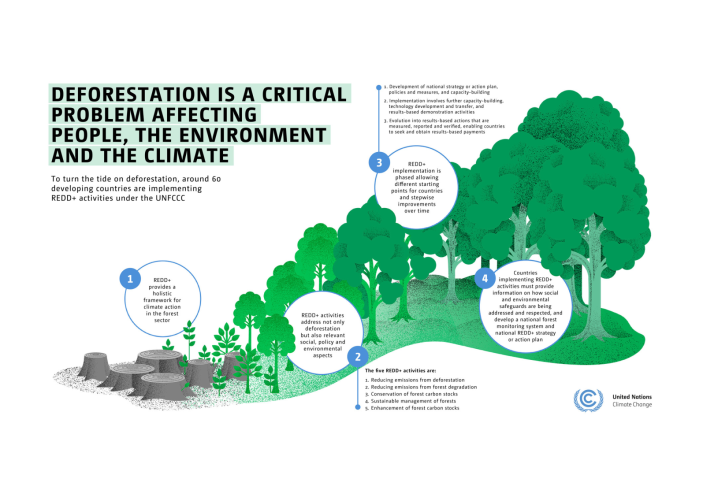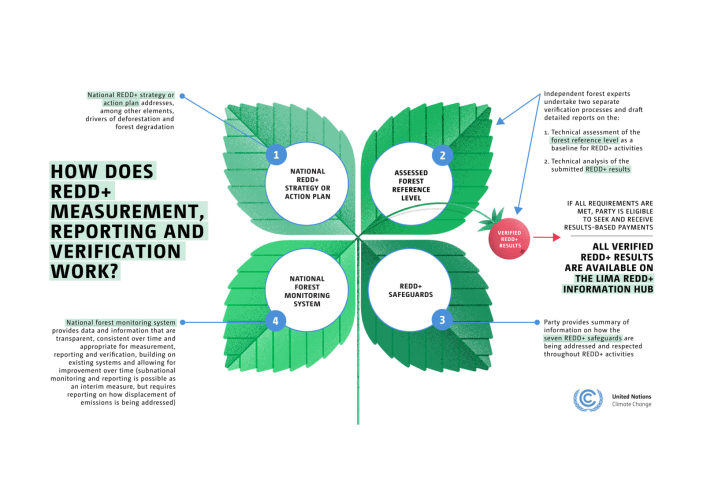The elements that are being developed during the early phases of REDD+ should be in place when developing countries seek to obtain and receive results-based finance for results-based actions that are fully measured, reported and verified. Information that needs to be reported to be eligible for results-based finance includes:
- The assessed results (tonnes CO2 per year) for each relevant period;
- The assessed forest reference level (tonnes CO2 per year);
- The summary of information on how all of the REDD+ safeguards are being addressed and respected;
- A link to the REDD+ national strategy or action plan;
- Information on the national forest monitoring system.
Both results and forest level must be analyzed and verified under the UNFCCC technical assessment (for forest reference level) and analysis (for results) process by two independent experts. Under Article 5 of the Paris Agreement, REDD+ reporting continues with the following arrangements:
- The technical assessment of forest reference levels continues to be organized as a centralized activity once per year;
- The technical analysis of results submitted in a technical annex of biennial transparency reports takes place concurrently with the technical expert review of biennial transparency reports.
Once reported, all of the information above, including technical assessment and analysis reports, is available on the central Lima Information Hub for REDD+.
One of the strengths of the WFR is the trust it creates between actors by providing transparency on the implementation of REDD+ results-based actions, while also allowing the flexibility for countries to implement REDD+ activities depending on the specific national circumstances, capacities and capabilities of each developing country and the level of support received. The transparency of REDD+ activities in accordance with the WFR is also essential to ensure environmental integrity and consistency with the Paris Agreement.
Parties, relevant organizations and stakeholders are also encouraged to share information related to REDD+ on the UNFCCC REDD+ Web Platform.

